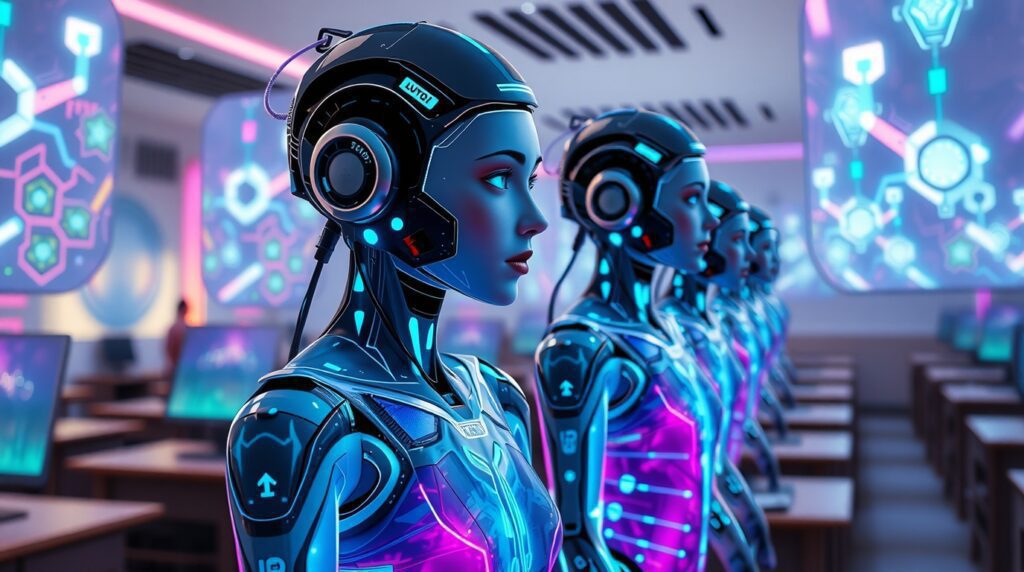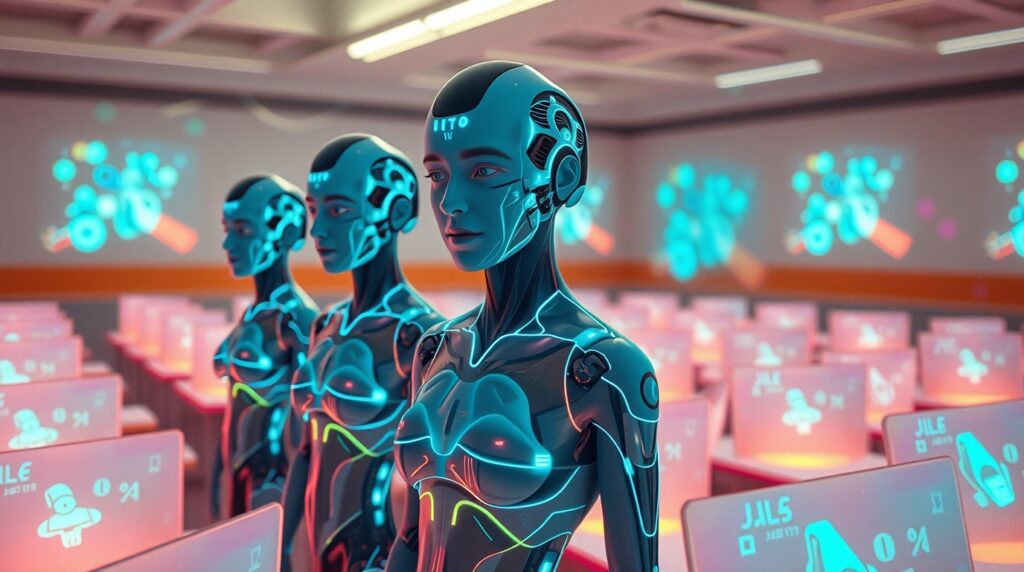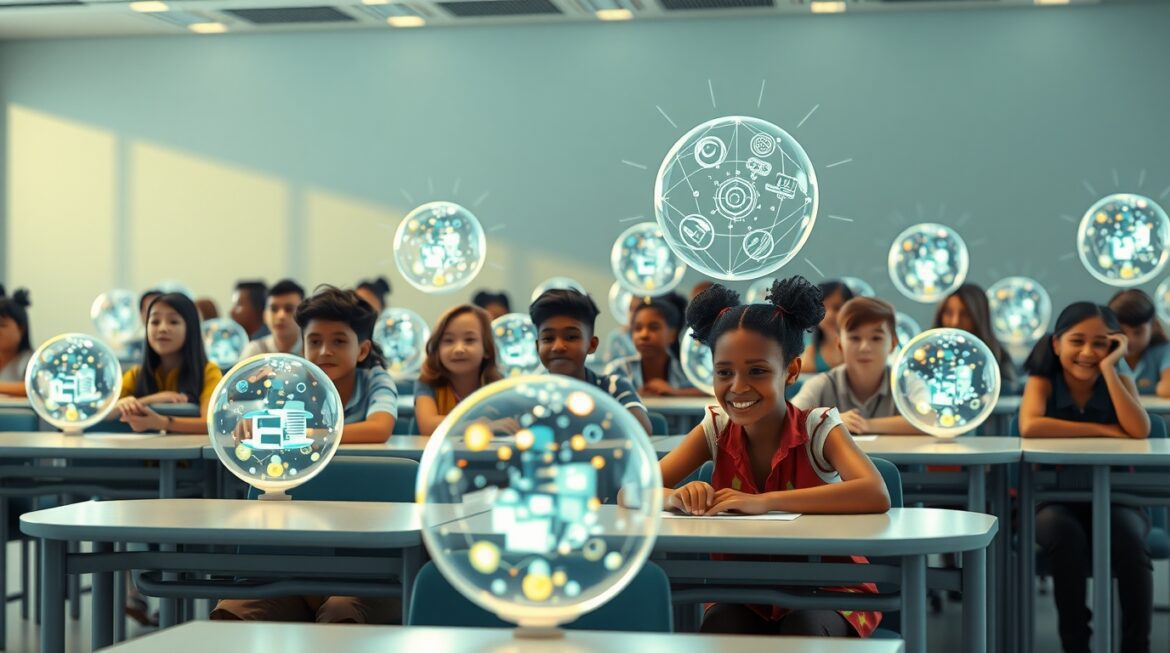AI Tutors and the Future of Learning: Personalized Education at Scale
The End of the Classroom Monolith
For centuries, education has followed a one-size-fits-all model: teachers lecturing to rows of students, standardized curricula, and rigid assessments. But in 2025, AI tutors are dismantling this archaic framework, replacing it with hyper-personalized learning experiences that adapt to every student’s pace, strengths, and passions. By leveraging machine learning, natural language processing (NLP), and neural interfaces, AI tutors are democratizing access to high-quality education while slashing costs and bridging global skill gaps. This article explores how AI-driven platforms are reshaping learning from kindergarten to corporate training, the ethical debates they ignite, and the groundbreaking technologies poised to redefine education by 2030.
The Evolution of Education: From One-Size-Fits-All to AI-Driven Personalization
The Industrial-Era Classroom: A Broken Model
The traditional education system, designed during the Industrial Revolution, prioritized uniformity over individuality. Students progressed through fixed grades regardless of mastery, while teachers struggled to address diverse learning needs. A 2025 UNESCO report revealed that 60% of students globally still lack access to tailored instruction, perpetuating cycles of disengagement and dropout rates.
Enter AI Tutors: Learning at the Speed of Thought
AI tutors are flipping this script. Platforms like Khan Academy’s Khanmigo 2.0 and Duolingo’s Max use adaptive algorithms to map each learner’s knowledge gaps, interests, and cognitive patterns. For example, if a 10-year-old struggles with fractions, the AI diagnoses misconceptions in real time, generates interactive visualizations, and adjusts problem difficulty until mastery is achieved. According to a 2024 Stanford study, students using AI tutors outperformed peers in traditional classrooms by 34% in math and 28% in reading comprehension.
How AI Tutors Work: The Technology Behind Personalized Learning

1. Adaptive Learning Algorithms: The Brain Behind the Bot
AI tutors rely on reinforcement learning (RL) and deep neural networks to simulate human tutoring. Tools like Carnegie Learning’s Mika analyze millions of data points—response times, error types, even facial expressions via webcam—to predict optimal teaching strategies. For instance, if a student excels in visual learning, the AI prioritizes video content and infographics.
2. Natural Language Processing: Conversational Learning
Generative AI models like OpenAI’s *GPT-6* enable tutors to hold lifelike dialogues. Georgia Tech’s Jill Watson, an AI teaching assistant, answers student queries in seconds, explains complex concepts in multiple languages, and even detects frustration in written responses to offer encouragement.
3. Multimodal Learning: Voice, Text, and VR
Advanced AI tutors integrate voice recognition, eye-tracking, and virtual reality (VR) to create immersive experiences. Medical students using Pearson’s Hololab practice surgeries in VR simulations guided by AI mentors that provide real-time feedback on incision precision.
4. Predictive Analytics: Stopping Dropouts Before They Happen
AI systems like India’s BYJU’s Success Predictor flag at-risk students by analyzing attendance patterns, quiz scores, and engagement metrics. Schools in Lagos, Nigeria, reduced dropout rates by 22% in 2024 after implementing these tools.
Case Studies: AI Tutors in Action (2023–2025)
1. Bridging the Global Literacy Gap: Kenya’s E-Limo Project
In 2023, UNICEF partnered with Kenyan educators to deploy AI tutor E-Limo in rural schools lacking qualified teachers. Powered by solar-charged tablets, E-Limo teaches math and Swahili through gamified lessons. By 2025, literacy rates in pilot regions jumped from 54% to 79%, outperforming urban schools.
2. Corporate Upskilling: Amazon’s AI Career Coach
Amazon’s SkillBuilder AI trains warehouse workers in coding, robotics, and logistics. Employees who completed the program saw a 45% increase in promotions, per a 2025 MIT study.
3. Special Education: Breaking Barriers with AI
Startup CogniX uses emotion-sensing AI to support neurodiverse learners. Its tools adjust lesson pacing for ADHD students and convert text to sign language for deaf learners, reducing achievement gaps by 33%.
Ethical Challenges: Equity, Privacy, and the Human Touch
1. The Digital Divide: Who Gets Left Behind?
While AI tutors thrive in wealthy nations, 800 million students still lack internet access. Critics argue that without global infrastructure investment, AI could deepen educational inequality.
2. Data Privacy: Who Owns a Student’s Mind?
AI systems collect intimate data—learning habits, emotional states, even brainwave patterns via emerging neurotech. The EU’s 2025 AI Education Act mandates strict data anonymization, but U.S. regulations lag, raising concerns about corporate misuse.
3. The Role of Teachers: Mentors or Monitors?
Fear of job displacement persists, but 2025 data tells a different story: Teachers using AI tutors report 50% more time for mentorship and creativity. As Harvard’s Dr. Karen Zhou notes, “AI handles the drills; humans handle the thrills.”
The Future of AI Tutors: Neural Interfaces, Metaverse Classrooms, and Beyond

1. Brain-Computer Interfaces (BCIs): Learning at the Speed of Thought
Companies like Neuralink and OpenBCI are testing BCIs that let students “download” knowledge or practice skills via neural feedback. In 2024, a Stanford trial allowed paralyzed students to control VR avatars using brain signals, achieving 90% accuracy in physics simulations.
2. Metaverse Learning: Education Without Borders
Meta’s Horizon Classrooms and NVIDIA’s Omniverse Education let students explore ancient Rome or conduct quantum physics experiments in shared VR spaces. AI tutors within these worlds adapt scenarios to each learner’s progress.
3. Self-Improving AI: Tutors That Learn From Each Other
Federated learning systems, like Google’s FedJAX, enable AI tutors worldwide to share insights without compromising privacy. A tutor in Brazil can instantly apply breakthroughs from a peer in South Korea.
The Democratization of Genius
AI tutors are not replacing teachers—they’re amplifying human potential. By 2030, analysts predict that 90% of lifelong learning will be AI-guided, empowering anyone, anywhere, to master anything. Yet, this future hinges on ethical guardrails: equitable access, transparent data practices, and preserving the irreplaceable empathy of human educators.
As Bill Gates noted in his 2025 Gates Foundation address, “AI won’t make teachers obsolete, but educators who use AI will eclipse those who don’t.” The classroom of the future isn’t a room at all—it’s a dynamic, AI-powered ecosystem where every learner thrives.


